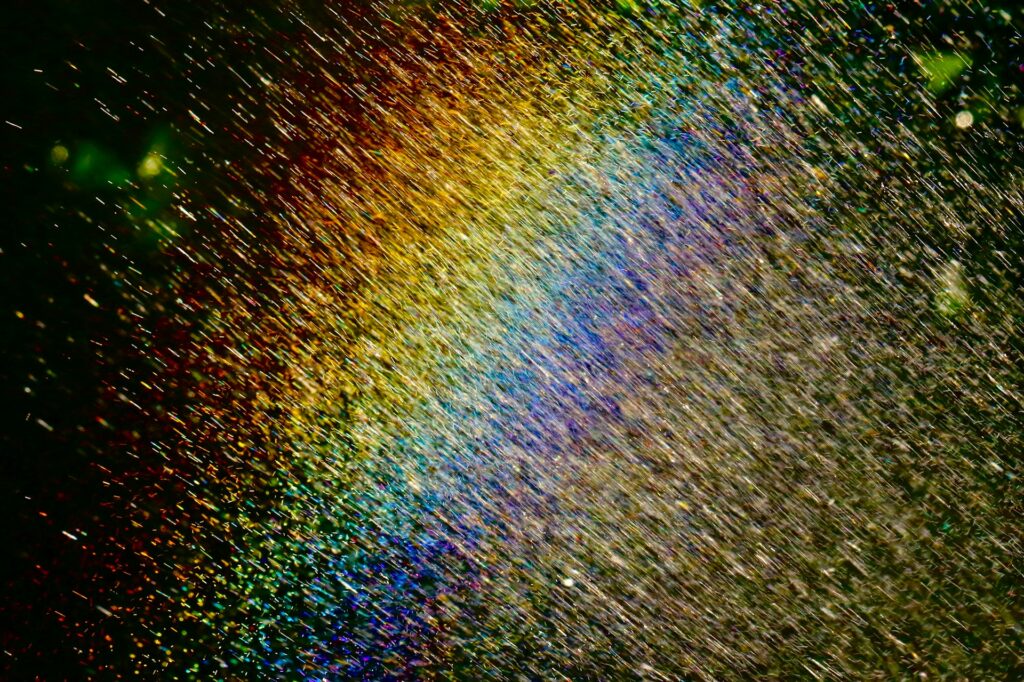This post is also available in Dutch.
This summer, we’re kicking off a new series in collaboration with BrainHelpDesk—a platform that was relaunched this spring. On the BrainHelpDesk, you can ask questions about the brain, and receive an answer by an expert, inside or outside the Donders Institute. Our first question comes from a reader who asked:
“Do colours appear the same to everyone?”
You can find an answer by Eelke Spaak on the BrainHelpDesk here. In this blog, we’ll elaborate what colour blindness can tell us about this question.
When colour starts in the eye…
Colour begins in the cones, light-sensitive cells in the retina. Most of us have three types—short (S), medium (M), and long (L)—which are tuned to different wavelengths of light (roughly: blue, green, and red). These cones send signals to the brain, which compares their responses to interpret colour.
However, about 8% of men (and a tiny fraction of women) are red–green colour blind, meaning they’re missing or have shifted sensitivity in the M or L cones. Others have even rarer forms like tritanopia (blue–yellow deficiency) or achromatopsia, where the world appears almost entirely in grey.
...but perception is built in the brain
A recent fMRI study scanned the brains of people with a mild form of red–green colour blindness (called anomalous trichromacy) as they viewed coloured patterns. In their primary visual cortex (V1), colour responses were dampened- This was expected, since their cones are less sensitive.
But in the next stages of the visual processing in the brain—V2 and V3—their responses looked normal.
That means the brain was boosting the weak signals, effectively “re-colouring” the world internally.
Hence, their brain “fills in the gaps” during later stages of visual processing. This may explain why many people with colour deficiencies don’t notice anything missing
One world, many visual realities?
But even those of us with “normal” vision don’t see the same red.
The shape and density of your cones, your lens yellowing with age, even your language—all can change how you experience colour in subtle ways.
While extremer differences in the make up of our cones can result in colourblindess, the lesser extremes of the same cone differences exist in people with ‘normal’ colour vision. This makes it likely that colour vision is not exactly the same for people that are not colourblind!
Meanwhile, in rare cases, individuals may have a fourth type of cone cell—a condition known as tetrachromats—which could allow them to perceive subtle colour differences invisible to the rest of us.
But it is not all about pure biology. Russian speakers, who have separate words for light blue (goluboy) and dark blue (siniy), are faster at distinguishing them than English speakers.
Language literally sharpens perception.
Different eyes, same painting?
But does this uniqueness mean we experience different worlds?
Not quite. In a recent eye-tracking study, participants viewed paintings while researchers compared where they looked. Trichromats (people with normal colour vision) were drawn to colourful, “popping” regions. Dichromats (with red-green colour blindness) had more varied gaze patterns.
However, despite their differences in colour processing, both groups ended up with similar overall impressions of the paintings.
The adaptive brain
So how does the brain pull this off?
Researchers have found multiple compensatory strategies for colour blindness:
- When colour differences are hard to see, the brain may rely more on how light or dark something is (luminance) to tell things apart.
- The brain may enhance small differences that can be picked up by cells that are intact, like blue cones or rods (mostly used in conditions of low light).
- The brain may combine the visual information it gets across both eyes.
- The brain may use memory and expectations. If you already know that apples are usually red or grass is green, your brain might “fill in the blanks” based on past experience.
An evolutionary superpower
Surprisingly, having “less” colour can sometimes be an asset.
In camouflage detection studies, colour blind individuals were better at spotting hidden shapes because they weren’t fooled by colour distractions. Their brains focused on texture and form instead.
This may explain why red-green colour blindness has persisted in evolution.
So… is your red my red?
Maybe not quite..
Colour blindness reveals that our experience of colour is not “in the world”, but rather constructed by the brain. The brain works hard to create a stable, meaningful representation of reality, even when the raw input differs. Colour blindness shows us how adaptable and individualised perception really is.
Picture credit: James Wainscoat on Unsplash.
